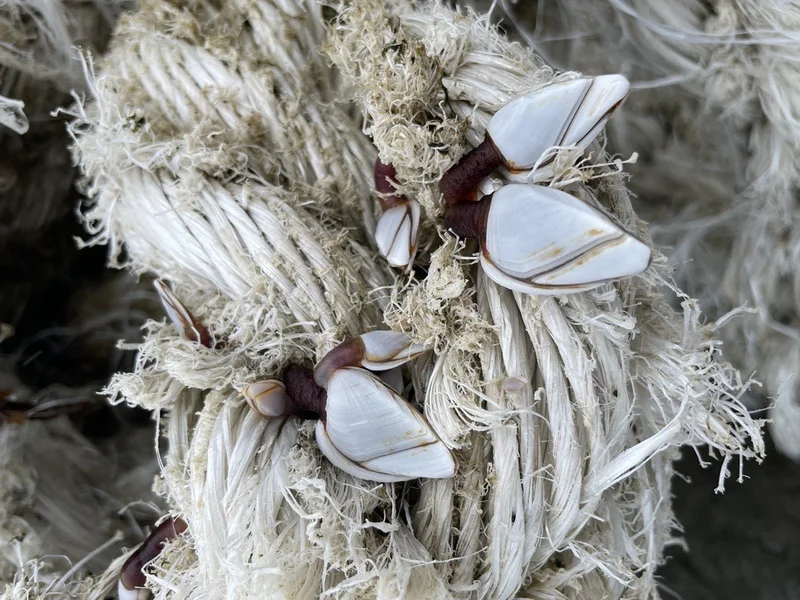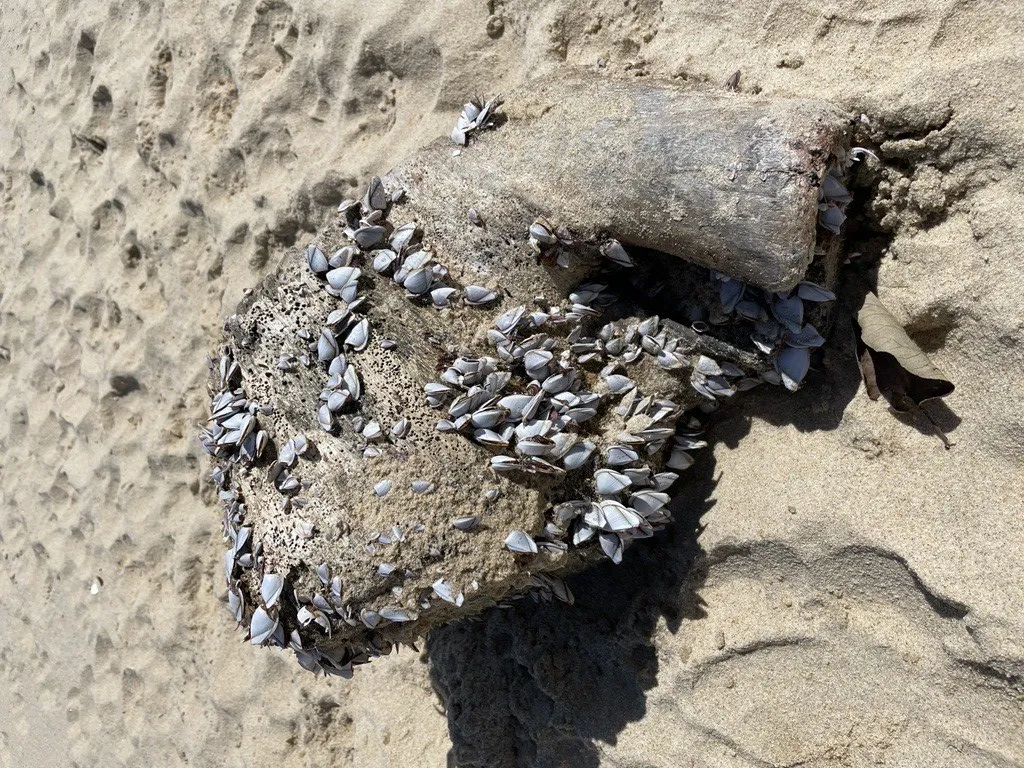Goose that helped a science discovery
Gooseneck barnacles and the fascinating link to science and healthcare solutions.

Goose barnacle
Also known as stalked barnacles, or gooseneck barnacles, these filter-feeding crustaceans live attached to hard surfaces such as rocks and flotsam* drifting on the ocean currents.
Unlike most other types of barnacles, they depend on water motion rather than the movement of their cirri for feeding (similar to tentacles that reach out to fan and filter the water for food).
Goose barnacles can only be found floating through the sea attached to debris on exposed coasts with lots of wave action.
These barnacles attach themselves to moving objects and are deposited onto our shores by the tide and sea.
Goose barnacles can be found attached to buoys, bits of wood and other general debris in the sea.
If it’s been floating in the sea for long enough you will find a Goose barnacle on it! And if you don’t see them you will definitely smell them.

Barnacle's medical adhesive helps science
One component of the Goose barnacle that continues to be researched today is the adhesive properties of its secretion.
An observational study about the adhesive properties of goose barnacles found its adhesive gland cells were located inside the muscle layer on the back side of the main stalk (peduncle). These glands secrete protein-based adhesive to make attaching the barnacles to fixed or mobile items possible.
This research in the barnacle adhesive serves as inspiration to the healthcare community to conduct their own research in an attempt to improve medical adhesive.
Love where we live and co-exist with nature in our wildlife friendly biosphere with these tips:
- stay on the designated walkway and out of the dunes and bush
- keep your dogs on a lead and pick up after them
- bin your rubbish to keep our Sunshine Coast clean and litter free
*driftwood or the wreckage of a ship or its cargo found floating on or washed up by the sea.
